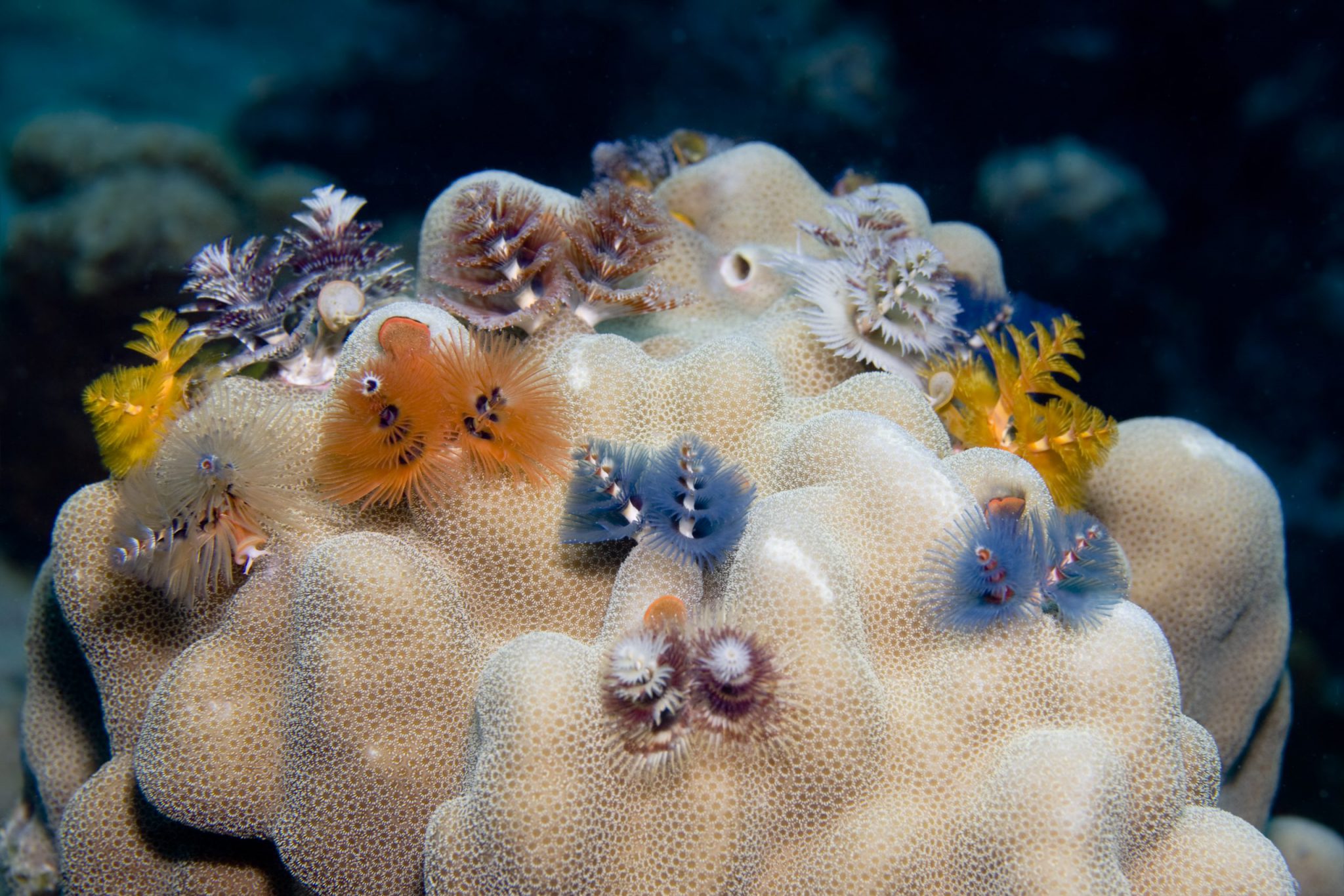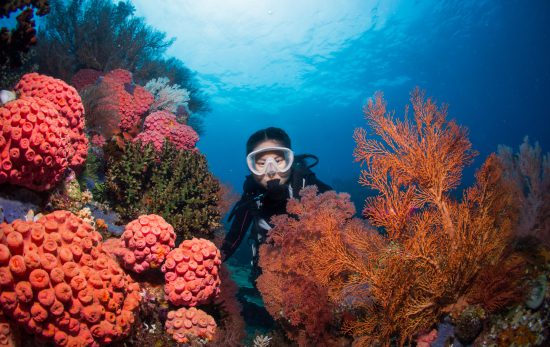With the holiday season upon us, there’s one special ocean animal that really gets us in the spirit – Christmas Tree Worms! For those of us living above the surface, the holidays come only once a year. But in the tropical waters of the world, these brightly colored worms are celebrating all year long by decorating coral reef communities.
Christmas tree worms (Spirobranchus giganteus) are colorful marine worms that look like miniature versions of fir trees that are decorated for Christmas. While the visible part of the worm averages only about 1.5 inches (3.8 centimeters) tall, their distinctive shape and intricate beauty allow divers to easily spot them. Whether you’ve seen Christmas tree worms while diving on a tropical coral reef, or you haven’t yet had the opportunity, learn more about these fascinating and festive marine worms.
Each Christmas tree worm has two magnificent tree-like plumes that can be seen on the surface of the hard corals they inhabit. These colorful spiraling plumes are in fact appendages of the worm, used for feeding and respiration. Each spiral ‘tree’ is made up of feather-like radioles that fan out from the worm’s central spine. By pumping sea water up and over their ‘trees’, Christmas tree worms are able to filter feed on plankton in the water column. These specialized ‘trees’ are also used by the worm to breathe.
The eye-catching section of a Christmas tree worm, usually not bigger than a few inches tall, is actually only one part of the whole organism. Belonging to the scientific family, Serpulidae, Christmas tree worms are tube-dwelling worms, meaning that most of the worm’s body is actually hidden in a calcium carbonate tube in a coral. Larval Christmas tree worms first settle on a hard coral, and over time the coral grows around the worm and its tube home that it creates. The portion of the worm within the tube is usually twice as long, or more, than their ‘trees’ visible from above. This allows the worm to withdraw fully into its tube when it needs protection.
Most commonly, Christmas tree worms inhabit large corals, such as stony corals like Porites and brain corals. When a Christmas tree worm withdraws into its tube, it can seal it closed using a trapdoor-like structure called an operculum, which is further protected by sharp spines. Very sensitive to disturbances, these festive marine worms will rapidly retreat into their burrows at the slightest touch or even passing shadow. This requires lots of patience and good buoyancy, for divers wanting to get an up-close look or to photograph Christmas tree worms. Typically, the worm’s miniature ‘trees’ will re-emerge very slowly a minute or so later.

While these brilliantly colored marine worms captivate the world with their beautiful ‘trees’, many are unaware of the important role that Christmas tree worms play in a healthy coral reef ecosystem. As part of a coral’s community, Christmas tree worms play a role in protecting its coral host. They have been observed defending against crown of thorns starfish by pushing away the predator’s tube feet. Additionally, research has shown that following a stressful event, coral tissue near a Christmas tree worm has been associated with faster recovery.
Overall, the presence or absence of Christmas tree worms can reflect the overall health of a coral reef. So next time you’re diving in the tropics, make sure to keep an eye out for these important, beautiful, and festive marine worms. From all of us here at PADI – happy diving and happy holidays!


